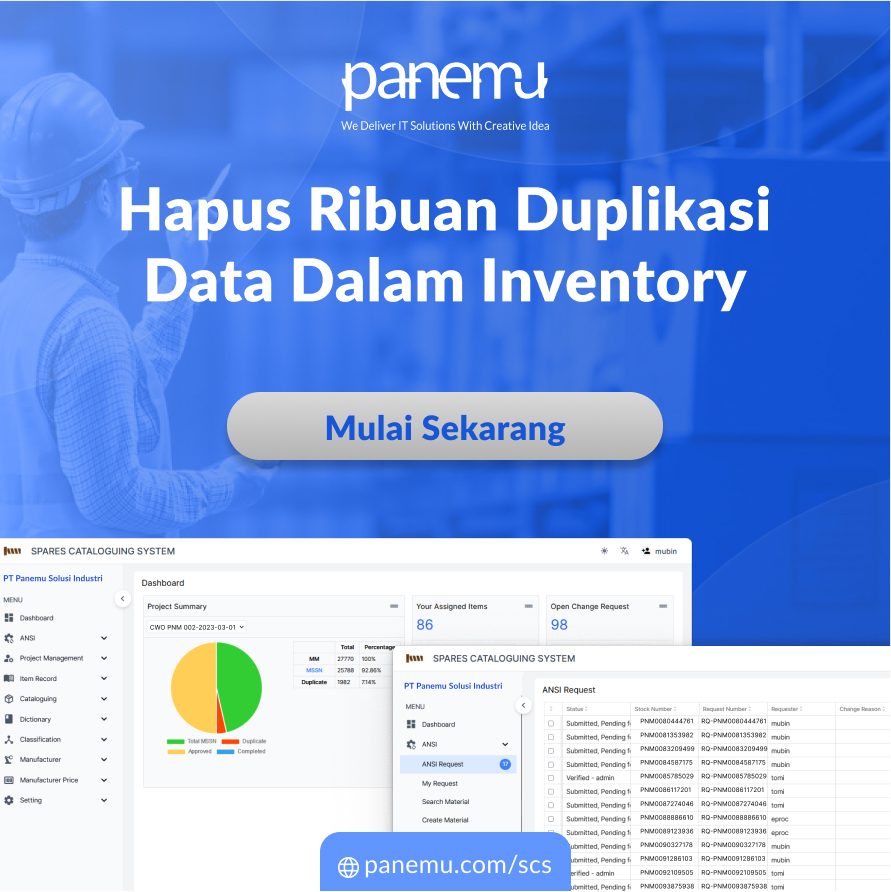Managing inventory and logistics efficiently is the key to success in online sales. With increasingly fierce competition, e-commerce businesses must be able to optimize this process to remain competitive and able to fulfill customer requests quickly and accurately. This article will discuss efficient ways to manage inventory and logistics, from basic strategies to implementing the latest technology such as Odoo Inventory.
1. Importance of Inventory Management and Logistics in E-commerce
Inventory management and logistics are the backbone of e-commerce operations. Without proper management, a business can experience overstock or stockout, both of which can be detrimental to the company. Overstock ties up capital and warehouse space, while stockouts can lead to lost sales and disappointed customers.
2. Using an Inventory Management System
Using an Inventory Management System (IMS) can help e-commerce businesses monitor stock in real-time. A good IMS can automate many manual tasks, such as stock counting, tracking incoming and outgoing goods, and provide analytical reports that are useful for decision making.
STI Benefits:
Data Accuracy: Reduce human error in stock counting.
Real-Time Visibility: Enables real-time stock monitoring.
Operational Efficiency: Save time and costs by automating processes.
3. Stock Management Strategy
The right strategy in stock management is very important to maintain a balance between demand and availability of goods. Here are some strategies that can be implemented:
Just-In-Time (JIT)
The JIT method involves procuring goods according to production and sales needs, thereby reducing storage costs and the risk of overstock. However, this method requires good coordination with suppliers.
EOQ (Economic Order Quantity)
EOQ is a method for determining the optimal order quantity that minimizes total inventory costs, including ordering and holding costs. Using the EOQ formula can help make more efficient purchasing decisions.
4. Optimize the Ordering Process
An efficient ordering process is key to fulfilling customer orders quickly. Some steps you can take to optimize the ordering process include:
Use of Barcode and RFID Technology
Barcode and RFID (Radio Frequency Identification) technology can speed up the process of scanning and tracking goods, reducing time and errors in order processing.
Integration with E-commerce Platforms
Inventory system integration with e-commerce platforms allows automatic stock data synchronization. This helps prevent the sale of out-of-stock items and ensures accurate stock information on the website.
5. Efficient Warehouse Management
A well-organized warehouse is the foundation of efficient logistics operations. Here are some ways to improve warehouse management efficiency:
Optimal Warehouse Layout
Designing an optimal warehouse layout can minimize time searching for goods and speed up the picking process. Consider using high shelves to maximize vertical space and placing items using the FIFO (First In, First Out) method to maintain good stock rotation.
Automation Warehouse
Using automation technology such as conveyor belts, robots, and automated storage and retrieval systems (ASRS) can increase speed and accuracy in handling goods. Automation also helps reduce labor requirements and the risk of injury.
6. Efficient Delivery Management
Efficient delivery management is critical to maintaining customer satisfaction. Here are some tips to improve shipping efficiency:
Selection of the Right Logistics Partner
Choosing a reliable and experienced logistics partner can ensure timely and safe delivery. Evaluate the performance of logistics partners regularly to ensure service quality remains high.
Use of Tracking Technology
Using tracking technology allows customers and businesses to monitor delivery status in real-time. This increases transparency and can help in resolving delivery issues quickly.
7. Effective Returns Management
Returns are an integral part of e-commerce business. Managing returns effectively can improve customer experience and maintain business reputation. Here are some ways to manage returns well:
Clear Return Policy
Set a returns policy that is clear and easy for customers to understand. This policy should include return terms and conditions, return timeframes, and the return process.
Integrated Return Processing System
Use an integrated system to process returns, enabling efficient tracking and management of returned items. This system can also provide returns data analysis to identify common causes of returns and make necessary improvements.
8. Use of Data and Analytics
Using data and analytics can help in making better decisions and optimizing inventory and logistics processes. Some analytics applications include:
Predictive Analytics
Predictive analytics uses historical data to predict future demand trends. This helps in planning proper stock and avoiding overstock and stockout.
Performance Tracking
Tracking operational performance such as pick times, delivery speed and stock accuracy levels can help in identifying areas for improvement. Use Key Performance Indicators (KPI) to monitor and measure performance regularly.
9. Applying the Latest Technology
Technology continues to develop and can provide a competitive advantage in inventory management and logistics. Here are some of the latest technologies that can be applied:
Internet of Things (IoT)
IoT enables connection and communication between various devices in the warehouse, such as temperature and humidity sensors, to monitor goods storage conditions in real-time.
Artificial Intelligence (AI) dan Machine Learning (ML)
AI and ML can be used to optimize various aspects of inventory management and logistics, such as demand forecasting, delivery route optimization, and stock management. This technology can help in making faster and more accurate decisions.
10. Maintain Good Relations with Suppliers
Good relationships with suppliers are essential to ensure smooth logistics operations. Some ways to maintain good relationships with suppliers include:
Open Communication
Maintain open and transparent communication with suppliers to ensure good information flow. Communicate needs and changes in requests in a timely manner.
Fair Negotiations
Negotiate fairly with suppliers to obtain prices and terms that benefit both parties. Consider establishing long-term partnerships that can provide stability in the supply chain.
11. Benefits of Using Odoo Inventory
Odoo Inventory is a comprehensive software solution for inventory management that can help e-commerce businesses optimize their operations. Here are some of the main benefits of using Odoo Inventory:
Complete Integration
Odoo Inventory is integrated with other modules such as sales, purchasing, accounting, and manufacturing. This enables automatic data synchronization and provides full visibility over all business operations.
Real-Time Tracking
With Odoo Inventory, you can monitor stock in real-time. This system provides up-to-date information about stock quantity, location and status of goods, thereby helping in making fast and accurate decisions.
Multi-Location Management
Odoo Inventory allows inventory management across multiple warehouse locations. This feature is very useful for businesses that have a wide distribution network and need stock visibility in various locations.
Process Automation
Odoo Inventory offers automation features such as automatic reordering based on minimum stock levels, automatic report generation, and integration with barcode and RFID scanning devices. This automation helps reduce manual errors and improve operational efficiency.
Analytics and Reports
Odoo Inventory is equipped with powerful analytical tools to monitor operational performance. You can generate detailed reports on stock movements, warehouse performance, and order fulfillment levels. This data is invaluable for identifying areas for improvement and creating strategic planning.
Conclusion
Managing inventory and logistics efficiently is the key to success in online sales. By using the right strategy and technology, e-commerce businesses can optimize operations, reduce costs, and increase customer satisfaction. It is important to continuously monitor and evaluate inventory and logistics management processes, and adapt to technological developments and market needs.
By implementing the tips and strategies discussed in this article, including leveraging Odoo Inventory, you can improve the efficiency of inventory management and logistics of your e-commerce business, so you can compete in an increasingly competitive market.



